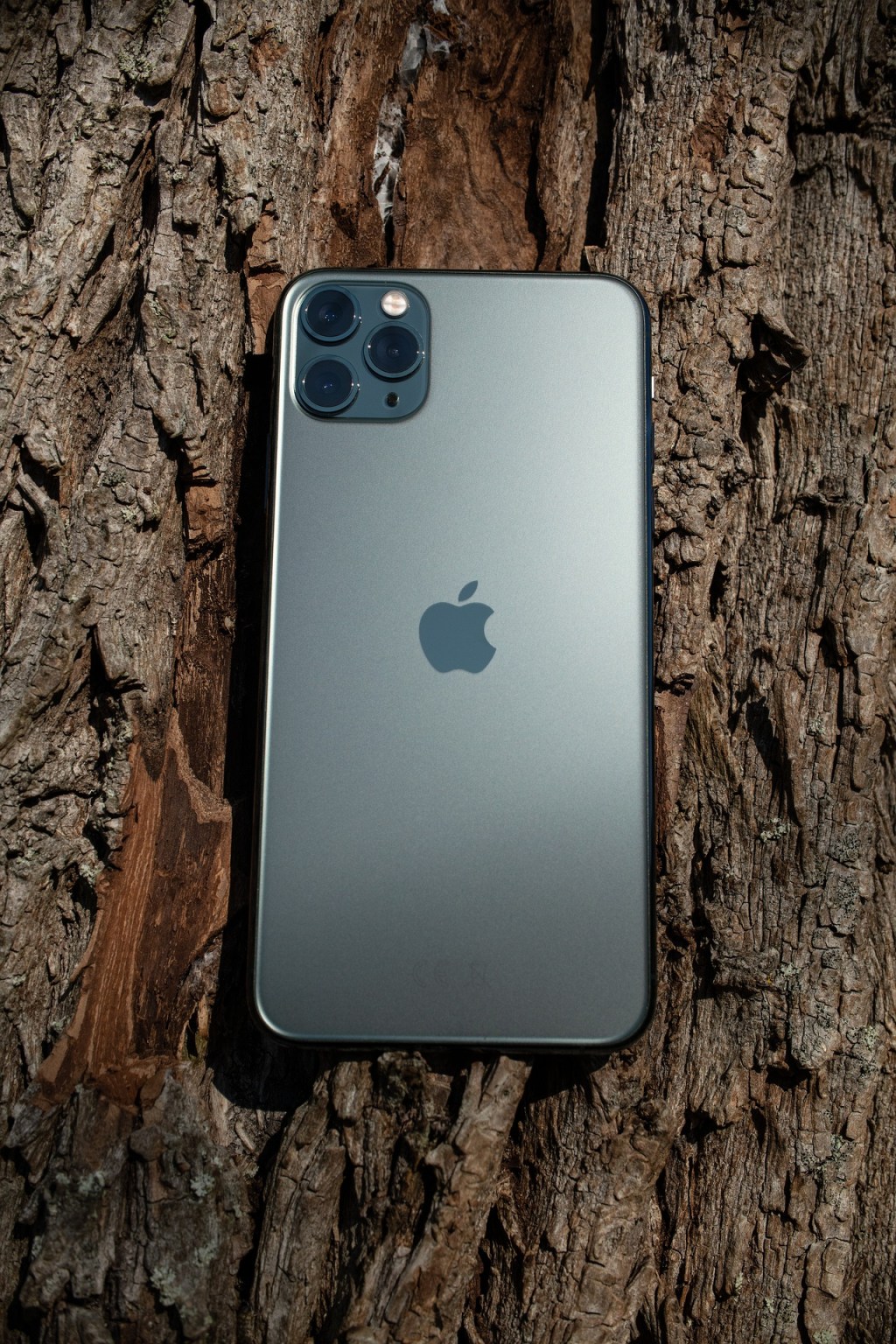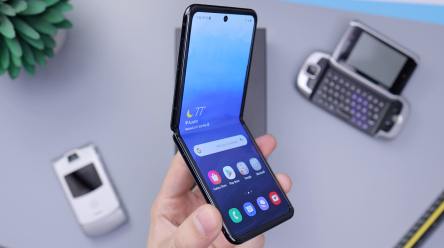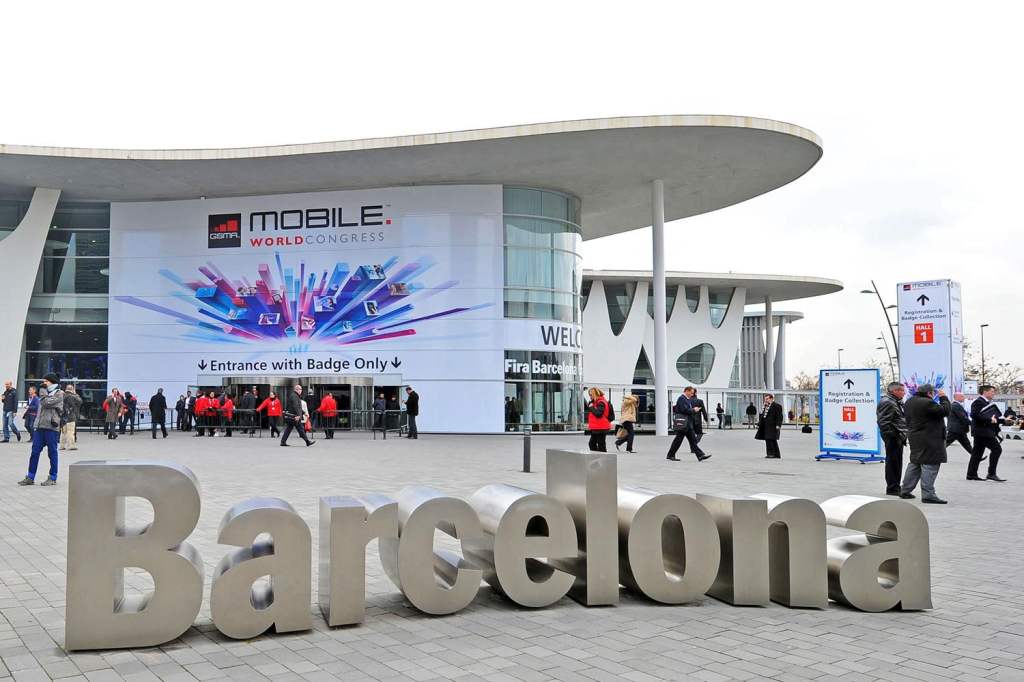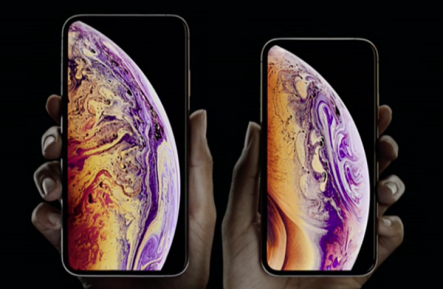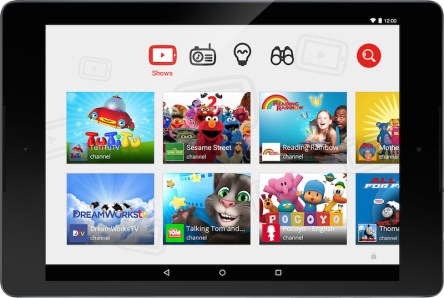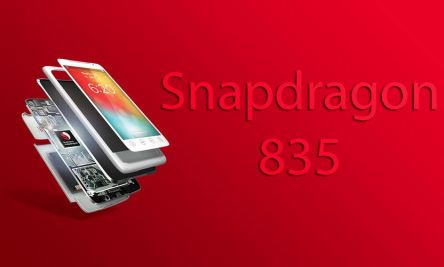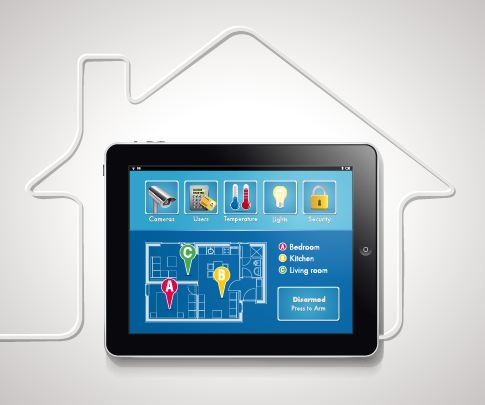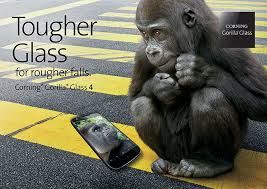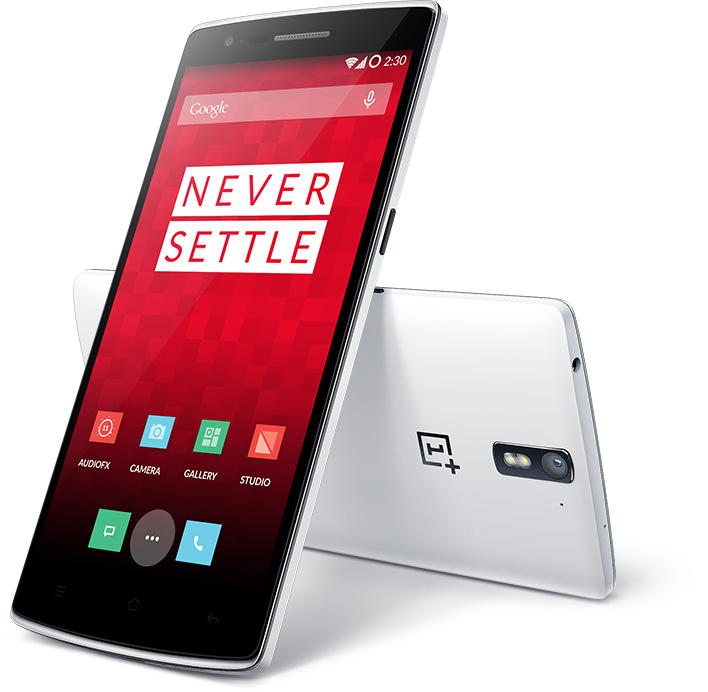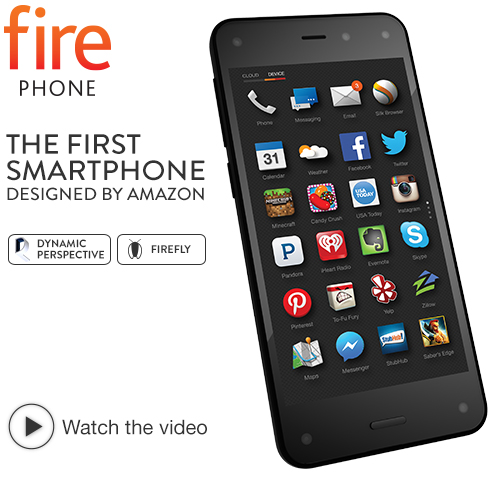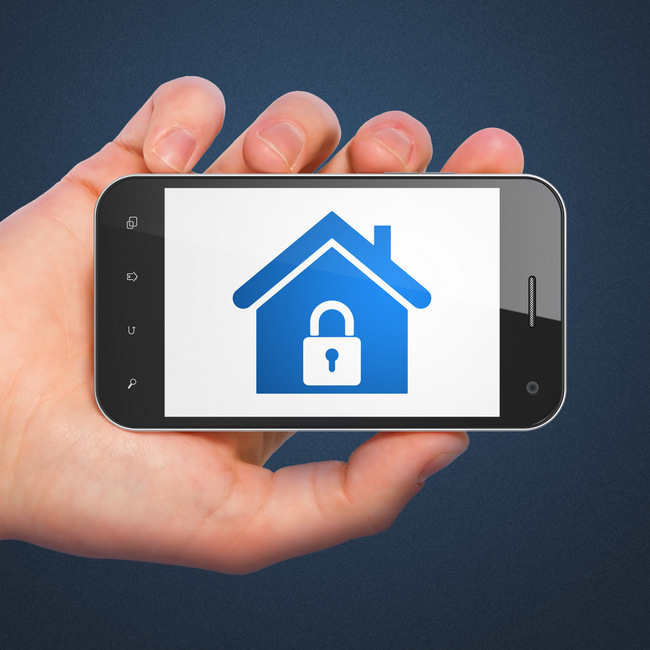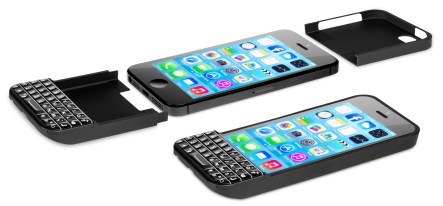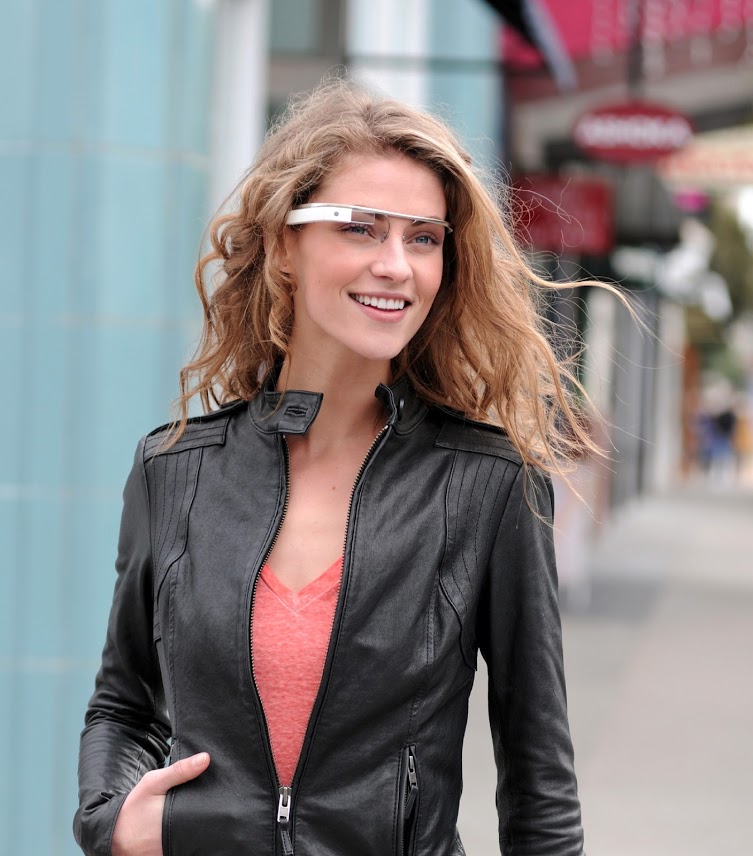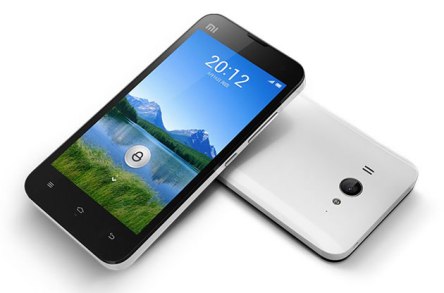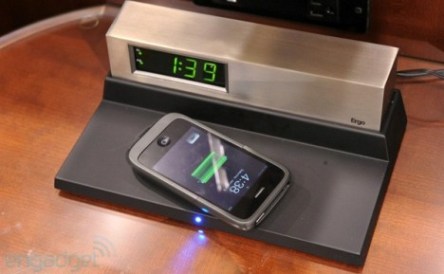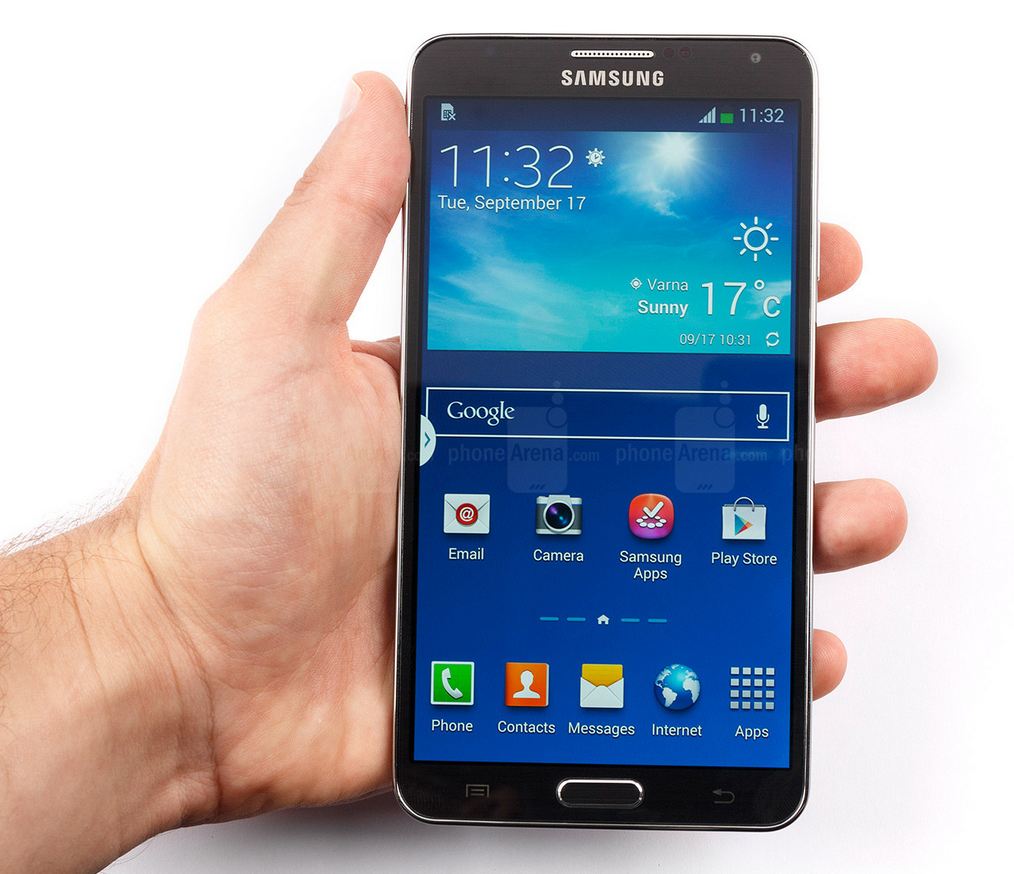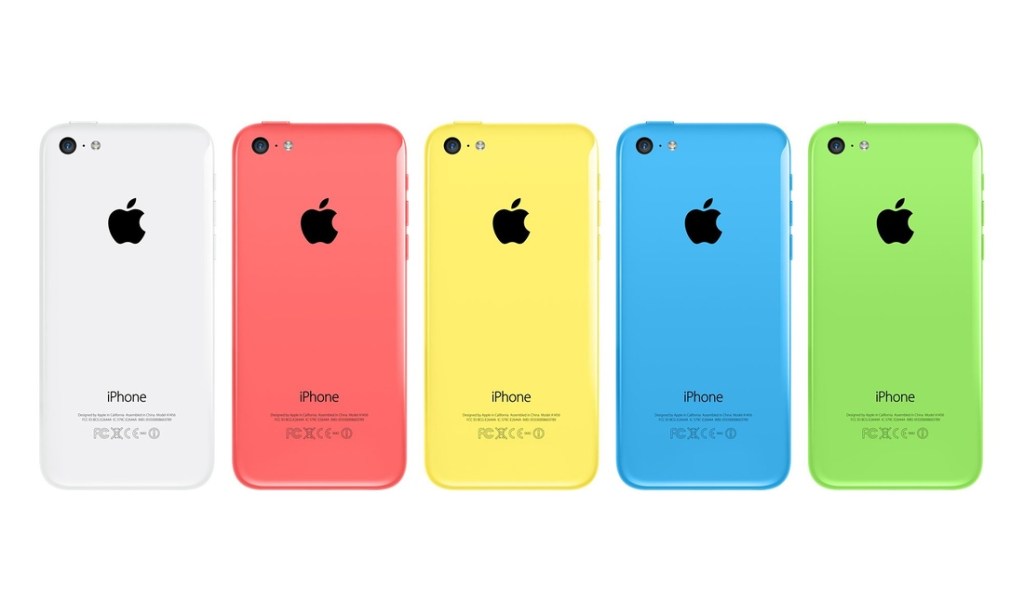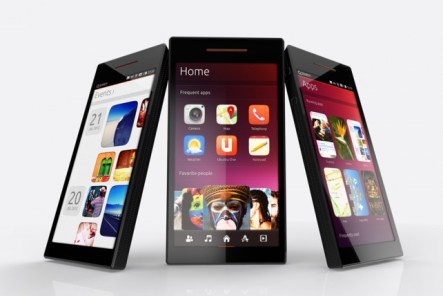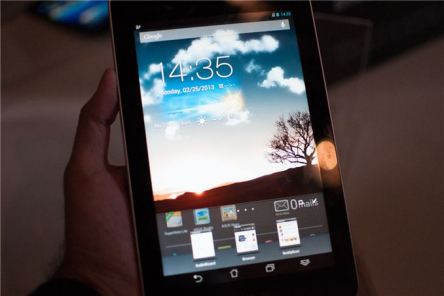The annual release of a new iPhone is a big deal for Apple tech lovers. Although the company doesn’t really release advance leaks about their new editions, there are always rumors of anticipated new features. Apple should launch its new set of phones in the month of September as usual, but the coronavirus outbreak could delay its release date. The new devices will be likely called iPhone 12, iPhone Max, iPhone Pro and iPhone Pro Max as since the iPhone 3G up to the iPhone 8 release, the company used sequential numbers for their names. There are also a lot of discussions about whether a 5G phone will be released, but many believe that all new devices will have this connectivity. The four models that are expected to launch this fall are: 4-inch iPhone 12 1-inch iPhone 12 Max 1-inch iPhone 12 Pro 7-inch iPhone 12 Pro Max iPhone 12 Design and Displays The Apple iPhone 12 is supposed to be taking us back in time, before the release of iPhone 6, and have squarer edges compared to the past phones which had more rounded edges. Oher sources have shown that the devices will be slightly larger, due to its larger displays, but thinner overall than last year’s models—7.4mm for the 6.7-inch device, compared to the 8.1mm iPhone 11 Pro Max. Many iPhone 11 users are hoping for a free-notch phone, or a reduced notch, but without it how would a face recognition be possible? In terms of displays, all devices should have OLED displays, compared to the current version of iPhone 11 which has LCD display, with only the Pro models having OLED. Regarding the hardware of the new device, a A14 processor, 4GB of RAM and 128 GB or 256GB of storage...
Foldable Phones
Samsung’s Unusual Smartphone
Samsung’s Galaxy Fold was first introduced in London last year during the company’s Unpacked event as being one of Samsung’s most innovative designs in years. Since then, the company has released a newer folding phone called Galaxy Z Flip and reviews say that it tops the previews Fold version. The $1,380 device has a plus compared to the Galaxy Fold: it can fit into your pocket when closed, which wasn’t the case with last year’s released. The Z Flip opens vertically and revels a 6.7-inch screen with a layer of ultra-thin glass. Galaxy Z Flip Design This phone design brings us back to the memory lane when the old flip phones where stylish and everybody wanted one, except this is a way more modern and technology-advanced version of the old one. Samsung says the phone can flip open to up to 200,000 times, which makes it a pretty durable device. Another thing that the company has learned from its mistakes made with Galaxy Fold is that for this device they designed a thin layer of fabric that makes sure that dust particles don’t go between the gap that exist between screen and hinge, which was a problem for the original Galaxy Fold. On the phone’s exterior there is a 1.1-inch SUPER AMOLED screen that show you incoming calls, texts and alarms. It also displays the date and time, so you don’t have to flip it every time you need to see what time it is. Additionally, there is a mini-view finder with which you can take selfies the Z Flip is closed. To do that, you just need to press the power button twice to summon up the viewfinder and then hit one of the volume buttons to take the picture. This is a...
Mobile World Congress 2019
Foldable phones star
Barcelona was again the epicenter of mobile tech last week when some 100,000 visitors attended the 2019 Mobile World Congress at the Fira Barcelona exhibition center. Foldable phones and 5G capability grabbed the spotlight, flanked by new multimedia applications and car updates. 5G foldable phones Two major smartphone brands presented headline devices: Huawei and Samsung. The Chinese manufacturer showcased the Huawei Mate X, a 6.6-inch device when used as a phone that expands in to an 8-inch tablet-like device. Despite its popularity, it comes with a sky-high price and will retail for $2,600 when it launches later this year. Mate X feeds off the company’s Kirin 980 processor and is 5G-compatible thanks to its multi-mode modem Balong 5000, marketed as the first chipset that supports Vehicle to Everything communications, providing low-latency and highly reliable solutions for connected vehicles. Additionally, the Mate X has backwards compatibility with 4G and 3G networks. The internal storage provides 512GB, expandable by up to 256GB through the card slot. Mate X is equipped with a massive 4,500mAh battery, which will get the phone charged up to 85 percent in just 30 minutes. Considering that 5G will consume more power than 4G, the boost in power will be more important than an upgrade. The device will include a three-camera array for the rear camera with 40, 16 and 8 megapixels, and one for the front camera. The foldable display is made of plastic, which brings some novelty to photographers. The setup means subjects will get a live preview of photos as they are being taken. A potential issue is the fact that Mate X wears its large screen on the exterior of the device, unprotected. Even though Huawei claims the hinge and the screen are durable, and that a special protector will keep scratches off the screen, skeptics will need convincing. Samsung’s Galaxy Fold is wrapped in mystery (and kept inside a glass case). The $2,000 device was introduced in London during the company’s Unpacked event, where nobody was allowed to touch it. Tech fans hoped that the MWC environment will enable them to get closer to it and maybe get their hands on the shiny device. But Samsung’s protectiveness remained the same, which led critics to project that perhaps Samsung rushed the launch of this revolutionary concept. Samsung’s foldable smartphone has a 4.6-inch HD+ Super AMOLED display which turns it into a 7.3-inch tablet. It is powered by a 4,380mAh battery—needed for the 5G network—also with fast charging capability. Galaxy Fold packs 12GB of RAM and a Qualcomm 855 processor and internal storage of 512GB, which cannot be expanded. Galaxy Fold sports six cameras—three on the rear, one with 16 megapixels and two with 12 megapixels, a 10-megapixel selfie camera on the front and two above the 7.3-inch display inside the fold with 10 and 8 megapixels. When folded, the device looks chunky, perhaps a better fit for a shoulder bag than a pocket. This leads to one big question: do these foldable phones really give us the best of both worlds? Are these devices innovative enough to make people want to spend thousands for a convertible phone? Or will consumers continue to purchase two devices for communicating and in-depth reading and browsing? Mobility, AR, AI Tech giant Hewlett Packard and automotive supplier Continental have partnered in the development of a new platform for sharing vehicle data. Built with blockchain technology to attest data security and transparency, the application will help OEMs and other automotive players trade better and monetize their data, in addition to differentiating their brands. HERE Technologies and Volvo have also partnered. HERE will provide map data for off-board cloud services that provides the location of cars and other geographical info. Volvo is developing these services in its own cloud environment and plans to deploy them to enhance the driver experience. Microsoft released Hololens 2, a gadget designed for commercial clients...
Autumn Crop
Apple's New Unveilings
At Apple’s September product unveiling, three new iPhones grabbed the spotlight. Tim Cook’s presentation also showcased the new Apple Watch, called “an intelligent guardian for your health.” To introduce the new Apple Watch to the world, Apple turned to American Heart Association president Ivor Benjamin, who applauded the company’s innovation and commitment towards health issues. The most prominent new feature of the Apple Watch Series 4 is that the device is now able to detect a low heart rate and atrial fibrillation. This advances its health detection capabilities far beyond simple exercise tracking. The watch is now able to measure the electrical activity of the heart, enabling the user to take an electrocardiogram simply by putting their finger on the digital crown. The feature, as well as irregular heart rate detection, has received FDA clearance. There is also a next-generation accelerometer gyroscope, which enables the device to detect a fall by the wearer —when a fall is detected, the watch will send an alert prompting you to call emergency services. If the device senses that the user is immobile for more than one minute, the call will be started automatically. This may be ideal for those aging but hip grandparents who don’t want to admit a life alert device might be a wise wearable. Design-wise, Apple Watch Series 4 flaunts a 30 percent larger display—which gives enough real estate for up to eight shortcuts for apps—as well as a thinner body, which make it less bulky on small wrists. The speakers are 50 percent louder and its new S4 chip will have the watch perform twice as fast. The battery life should last for 18 hours and outdoor workout time has increased to six hours. Pricing starts at $399 for the GPS model and...
Kid Stuff
YouTube's App for Children
Watching a cartoon on a smartphone, tablet or smart TV has become a daily routine for many kids. Whether it’s Peppa Pig, Thomas & Friends, Talking Tom or online hits such as Mother Goose Club, Super Simple Songs or Wonder Quest, children spend hours with their eyes glued to those screens. As a parent, it’s almost futile to think you can control everything they watch. But YouTube came up with a handy companion. The YouTube Kids app enables adults be in command. The kid-friendly version of YouTube features a simplified design, a selection of age-appropriate content and, probably most importantly, parental control. YouTube Kids has a completely different design from the regular YouTube application. Kids can tap on large buttons to reach dedicated sections such as “Shows,” “Music,” “Learning” and “Explore,” indicated by icons of a play button, radio, lightbulb and binoculars, respectively. You should be aware the app does feature advertisements, but if you or your child come across any inappropriate content you can flag it in the same way you would on the original YouTube app. How it Works The YouTube Kids app has become a popular platform amongst families around the world. More than eight million weekly active viewers use the app. Recently, YouTube Kids was made available on LG, Samsung and Sony smart TVs in the 26 countries where the app is currently launched. Here are a few tips: Downloading the app on your device is free for iOS and Android platforms. Your device will need to be operating on iOS 7 or above or Android 4.1 or above. The app doesn’t require a sign-in or Google account. You can also watch YouTube Kids videos on your TV with a Chromecast, Apple TV, game consoles and smart TVs. After the...
Snapdragon 835
A Teeny Tiny Chip
Back in November, Qualcomm was announcing the Snapdragon 835, a brand-new top-end, tiny chip that will be the heart of the most powerful smartphones to be launched this year. Its arrival will replace the Snapdragon 821 as the company’s flagship chip. The 835 is Qualcomm’s first 10nm chip. Let’s just sit here for a moment and understand what it means. A chip incorporates a circuit and transistors. Think about the transistors as of tiny electronic switches that allow computer systems to get things done. The more transistors you have, the more things you can get done simultaneously. In short, the more transistors you have on a chip, the more powerful the chip is. 10nm reflects a physical distance, but it is a hard size to imagine—1,000 times smaller than a strand of hair or about the size of a few dozen water molecules. What this distance describes is called in technical terms “device half-pitch” and it stands for the distance between a feature on one transistor and the same feature on the transistor next to it. In other words, it describes how far apart the transistors are, or how densely they are packed together. In addition, the device is 35 percent smaller and uses 25 percent less power than previous designs. Currently, Samsung and Taiwan’s TSMC are able to manufacture 10nm chips, but it is becoming increasingly difficult to keep packing transistors more densely. Rumors say that the Samsung Galaxy S8 and Microsoft Surface Phone will carry the chip. LG G6, HTC 11 and OnePlus 4 might house it too. However, since Samsung also produces its own processors, the Exynos series, chances are that at least some of their S8 units will feature Samsung’s own custom-built Exynos chips. Qualcomm confirmed that the Snapdragon 835...
Safer Smart Homes
Internet Security
The Internet-of-Things promises convenience and efficiency, but without security protocols, any connected home could end up the victim of hackers and other cyber-crime. Is your refrigerator running? No, this isn’t some rehash of a preteen prank-call; thanks to Smart Homes, it’s now a legitimate concern. While “the internet of things” promises to liberate us from the toil of monitoring our residential lighting and free us to manage appliances from the comfort of our smart phones, this convenience is not without risk. As a recent article in Wired points out, all those residential Wi-Fi connections have enabled “a new breed of over-the-internet attacks,” and Smart Homes are easy pickings for all manner of cyber-criminals. Connected and Vulnerable The ability of hackers to remotely access internet connected devices has plagued public utilities and healthcare providers quite a bit in recent years. In 2011, Russian hackers accessed the pump system of a Springfield, Illinois water utility, stealing users’ names and destroying a water pump. Earlier this year, ransomware knocked out the internal computer at the Lansing Board of Water and Light after an employee opened an email attachment. And the attacks are only increasing in volume and severity, trigger many security experts to raise the alarm and call for more stringent security systems. As Malwarebytes security researcher Jérôme Segura recently mused when considering the dangers of ransomware, “One can imagine how detrimental it would be if someone was in the middle of a major operation and suddenly all of their health records became unavailable.” In fact, the concern about Smart Home vulnerability is not theoretical. In May of this year, Cybersecurity researchers at the University of Michigan unlocked the front door of a Smart Home using specially developed “lock-pick” malware. By exploiting “over-privilege” – a security loophole...
Calling All Cars
Senior Transportation
For seniors struggling to get to and from medical appointments, coordinating transportation just got a little bit easier, thanks to ridesharing companies like Lyft and Uber. For many, the first real taste of freedom comes with the acquisition of a driver’s license. Suddenly a whole new world opens up, one covered in blacktop and filled with endless possibility. But licenses don’t last forever, and eventually we are all forced to surrender the driver’s seat. While public transportation, bicycles, and even taxi services can help the “carless” get around, for many older adults giving up the car keys means giving up independence. But that’s all about to change! With the advent of Uber and Lyft, relatively budget-friendly, on-demand car service can be beckoned with the touch of a button. Because only 25% of American seniors own smartphones, in the past they’ve been left out of the rideshare loop. Recent efforts by Lyft and Uber aim to close that gap. In the last few years, both companies have embarked on programs designed to open up their services to older adults. No More Waiting Around According to Senior Housing News, 3.6 million U.S. citizens skip medical care and miss doctor’s appointments because they lack access to adequate transportation. For seniors, the inability to receive regular checkups and non-emergency medical care leaves them vulnerable to life-threatening complications. Many traditional transportation services available to seniors require advanced bookings, which can make impromptu appointments impossible. Pre-booked transportation services also operate within limited schedules, leaving seniors with no other option but to arrive hours early or wait around for a ride long after the examination is over. “The inefficiencies in this industry are enormous, and patients have no voice or alternative,” Anya Babbitt, Founder & CEO of SPLT stated in a...
Data Leasing
Less Space, More Business
Large retail centers used to be revered for their prestige and variety. Getting to the 2 million-square-foot Sears and Roebuck center in Atlanta, GA was once a pilgrimage for consumers throughout the region. The days of such super-sized department stores are long gone. With the growing popularity of online shopping, brick-and-mortar stores are steadily shrinking. This trend is likely to continue but that doesn’t mean that REITS and owners will see less cash flow from their vast, existing properties. Data leasing, the new frontier, is proving to be a gold mine full of possibilities. CBL & Associates is introducing the Digital Star program at its properties. It is a set of fiber paths, routers, and related infrastructure that is made available to tenants in CBL properties. Three shopping centers are piloting Digital Star this year. “The new space for lease is all digital,” says Mike Harrison, Senior Vice President at CBL. “It’s a whole new way of thinking. It’s in high demand.” The average demand ranges from 4-10 megabytes for most retailers but there are tenants such as Microsoft and Apple that need well over 100 megabytes. To meet the growing demand, CBL has teamed up with Granite Communications to provide data management and services. Together, they offer tenants brick-and-mortar stores with a range of digital capabilities. The duo is constantly thinking on its feet. The need for data will only increase as retailers explore methods in which digital and online tools can enhance the customer experience and improve the efficiency of operations. Consumers motivate the bulk of data demands. Even when they are inside of a store, consumers continue to shop and research online for product reviews, detailed product descriptions, and offers from competitors. In addition to in-store wi-fi, consumers expect increasingly interactive...
Project Phire
Tough as Glass
One is tough, you drop it and it doesn’t shatter, the other is super resistant to scratches; one is named after a massive primate, the other after a wonderful gemstone. Gorilla Glass and Sapphire Glass are the two major product players in the tough glass race. Gorrilla Glass is developed by Corning, a leading innovator in materials science. Corning has been continuously working on improving the toughness of their product, attempting to strengthen it to survive all types of disastrous scenarios. So far the company created the best product on the market, but has as principal flaw its low scratch resistance. The latest update released by Corning is Gorilla Glass 4, introduced in November. This is one twice as strong as the previous generation, claimed the company, and survived the fall 80 percent of the time, unlike the soda-lime glass used in other phones which shattered in every test. However, the Glass 4 proved to be less resilient to scratches than the Gorilla Glass 3 and thus engineers went back to the drawing board. Recently, Corning started focusing on the qualities of sapphire glass and looked for ways to insert the scratch-resistance feature into their product. Thus originated Project Phire, an initiative that wishes to combine Gorilla’s strength and the resistance of the sapphire. The new material has been unveiled at a New York investor meeting, reports CNET. The new glass will start selling later this year, without specific details on price or date. Why not synthetic sapphire? According to Corning, even though synthetic sapphire is extremely resistant to scratches, it doesn’t hold up when dropped. And smartphones are dropped a lot. According to some analysts the price of the sapphire glass would increase painfully the price of the smartphone wearing it. We...
OnePlus One
Invite-only, low cost smartphone
There’s a new kid on the smartphone block. Hailing from China, they call it the “flagship killer” due the extremely low price of $299 off-contract. It’s the OnePlus One, the smartphone that can be purchased only through invitation. Pete Lau, former employee of OPPO where he led the Blu-ray division, launched this startup in December of 2013. His product is a serious competitor to Google, which has been dominating the low-cost, unlocked, off-contract flagship space with its Nexus line. OnePlus One is priced at $299 for the 16GB model and $349 for the 64GB model and requires the aforementioned invitation to be able to order it. Design and specifications-wise, this smartphone explains why it’s called a “flagship killer”. This is a sleek and solid phone that looks anything but cheap. Aesthetically it resembles the HTC more than the plasticky Galaxy phones. It has the tough Gorilla Glass 3 display that rises slightly above the thin metal lip, but the real center of attraction is the rear of the device: OnePlus introduces 7 exchangeable back covers that come in a range of materials and textures including kevlar, bamboo, and denim on top of faux silk and sandstone. The OnePlus is a thin 0.35 inch and weighs in at 5.7 ounces – quite light for a 5.5-inch phone. The display is no slouch at 1,920 x 1,080 IPS LCD with 401 ppi. Its left side is adorned with the volume control and the micro-SIM slot, while the right side has the power button. On the top side there’s a 3.5mm headphone jack and the twin speaker grilles flank the micro-USB port on the bottom. At the bottom of the screen is where its three buttons are – Settings, Home, and Back, from left to right. Its...
Amazon Lights A Fire
New smartphone on the scene
It may have felt like the smartphone world had reached a point of status quo until a few weeks ago, when Amazon launched the Fire Smartphone after years of preparations. Chief Executive Jeff Bezos described it as the gadget that “puts everything you love about Amazon in the palm of your hand — instant access to Amazon’s vast content ecosystem and exclusive features.” The technical specifications present a device worthy of premium classification. A 2.2GHz Quad-core Snapdragon 800 CPU with Adreno 330 GPU and 2 GB of RAM fuels the Fire, complemented by a 2400mAh battery that burns up to 22 hours of talk time, 285 hours of standby, up to 11 hours of video playback, and up to 65 hours of audio playback. The screen is 4.7-inches with glass on the front and back giving it a less plasticky feeling than a Samsung Galaxy, but adds to the weight reaching 160 grams. Unfortunately, the Gorilla Glass 3 it has on both sides is durable but not shatter-proof, thus doubling the risk to break it. The OS is Fire OS 3.5.0 built on the open source version of Google’s Android operating system, without Google’s standard suite of apps and without the Google Play app store. Fire has its own app store, browser, email client, and non-Google maps. Among the most popular apps in its store are Facebook, Twitter, Instagram, Pinterest, Pandora, Netflix, HBO Go, Uber, Yelp, and StubHub. Two cameras, a 13 MP rear-facing camera with multi-frame HDR, auto focus, optical image stabilization, f/2.0 5-element wide aperture lens, LED flash, and a 2.1 MP front-facing camera have a dedicated button to wake the camera and snap a photo, even when the device is asleep. The Fire Phone shoots 1080p video and features HDR, panorama...
Smartphone Safety
Securing your device
For most of us, the smartphone has become the latest version of “don’t leave home without it” – remember that old American Express slogan from back in 1985? Most of us can’t make it more than a few minutes without access to our personal communication devices, which double as mini-computers and someday very soon will probably supplant our credit cards as a financial transaction point of contact. Most of us have adapted to the positive implications of the mobile technology we are carrying in our pockets. But we are less aware of the capable sensor suite, and associated risk, that is probably within your visible – or at least audible – range at this very second. Scientists and researchers have examined phones from all the angles, trying to help us prepare for any threats to the security of our personal information and data contained therein. One facet of the study on mobile phones involves the accelerometer’s power to detect vibrations. According to a research conducted by the computer scientists at Georgia Tech, placing a phone on a desk can detect the vibrations from keys pressed on a nearby keyboard and even pick out words with an accuracy of up to 80 percent. Although this type of attack might be more difficult than other methods of keylogging it can be a highly effective espionage story. “The best-case scenario, if you are an attacker, is if you are going after a very specific person”, says assistant professor at Georgia Tech, Patrick Traynor. “I think it is realistic in that case.” Accelerometers track movement in three dimensions: side-to-side, forward-and-backward and up-and-down. Analyzing the data they collect can give a good idea of the number code or pattern used to protect a smartphone. Adam J. Aviv, Katherine Gibson,...
GSMA Mobile World
Internet of Everything
Once again, Barcelona hosted the GSMA Mobile World Congress, a global showcase where some of the industry’s biggest names displayed their latest toys. This year’s event featured over 1,800 exhibiting companies, more than 85,000 visitors from 201 countries, a new record, reflecting again how pervasive mobile has become. The four-day conference and exhibition became the meeting spot for executives from mobile operators, software companies, equipment providers, internet companies, and automotive, finance, and healthcare industries, topped by government delegations from all over the world. More than 4,500 CEOs, including Facebook’s Mark Zuckerberg and IMB’s Virginia Rometty held keynotes, followed by CEOs and senior executives from companies like Alcatel-Lucent, América Móvil, Bitcoin Foundation, Cisco, Citigroup, Connecthings, EMC Corporation, Etisalat Group, Ford Motor Company, Isis, Jasper Wireless, Kakao Corp., KDDI, Lookout, Millicom, NTT DOCOMO, Raspberry Pi Foundation, Shazam Entertainment, Shhmooze, SingTel, SK Planet, Tele2 Group, Viacom International Media Networks and WhatsApp. The Connected City attracted over 17,000 visitors over the four days, and presented mobile solutions for services like education, health, retail, transport, smart cities and more. The Internet of Things describes the phenomenon of network-connected sensors incorporated into devices that in the past were standalone appliances. An even broader term, ‘The Internet of Everything’, includes smartphones and other mobile computing devices, as well as Internet-connected appliances. Remember Google’s move earlier this year, the $3 billion acquisition of Nest’s smart thermostat and smoke alarm technology. A wide variety of vendors showed or announced services and products that fit the concept. The automakers announced connectivity technology this week, to meet consumers’ expectation of having the same connected experience with their cars as they have with their mobile phones. Deutsche Telekom announced a deal with PayPal through which it will enable the possibility for the mobile users to purchase...
Travel 2014
The good, the bad, the horrid
This year, business travelers can expect to see a variety of changes between point A and point B. Do you want to start with the good news or the bad news? Bad news makes good news even sweeter, so let’s start there. Many airlines started off the New Year by jacking up existing fees. Spirit Airlines, United Airlines, Delta and US Airways have raised the price on checked luggage. Some changes depend on the quantity of checked bags, others on the size. None have amended their promise to have your checked bags arriving in a timely and unaltered manner. Now for the best news of the year: you can get through security checkpoints at pre-9/11 speeds. TSA Pre-Check has expended its program, encouraging applications from a greater pool of frequent travelers. Pre-check members get through security faster without the strip-down and tedious unpacking and repacking of toiletries and electronics. If that’s not reason enough to rejoice, we may see a drop in in-flight internet prices. Wifi access is becoming more common in the air. Companies like Gogo, Row44, ViaSat, and soon Panasonic service airlines with internet connectivity. Some, such as Gogo, use ground-to-air tower transmissions while ViaSat use a faster transmission via satellite. More companies on the market plus different speeds could result in a range of prices and services offered in the air. This could be great for business travelers, who may soon see lower prices as airlines compete. Now for news with mixed appeal. 2013 ended with a proposal on the table for in-flight calls. The FCC then entered a 30-day proposal period to receive feedback from industry leaders and consumers. Delta and Jet Blue haven’t waited for the FCC’s decision. Both airlines have rejected the idea altogether, declaring their planes a...
Cooler Cases
Amazing innovation at CES
Earlier this month, the Consumer Electronic Association presented the latest innovations in the smartphone’s most important peripheral accessory: the lasted and greatest in cases. But these babies do much more than just protect your phone from the inevitable fumble, toss, or spill from your shoulder bag. A popular one is the Typo case (left) for iPhone 5 and 5S, a $99 indigo copy of the BlackBerry keyboard founded by Ryan Seacrest; this case comes with a backlit physical keyboard at the bottom of the iPhone. It’s a niche product that doesn’t require too much of an effort to use it: at the first use it has to be paired with the iPhone and once set up it takes over from the iPhone’s keyboard software anywhere text can be inserted. A special key allows switching through the keyboard’s languages. It also has a key that mimics the function of the home button as the case covers the one of the iPhone. Of course, on the iPhone 5S the fingerprint-recognition function is lost; Siri is still present by holding down Typo’s home key. The keyboard has its own battery that the company claims will last one to two weeks between charges. This four-row replica triggered BlackBerry’s reaction and sued Typo for patent infringements. What will happen in court remains to be seen, but until then the Typo is available for sale and might be a much needed accessory for former BlackBerry users who are thumb-typing experts. No version has been announced for Android users. Mophie presented its new battery case for iPhone 5 and 5S and it doesn’t look too different from the previous Juice Pack Air, it’s just a bit taller. However, the way they used the extra height is what made it be the...
Where in the Era?
Are we post, past or plus-PC?
Era of Personal Computing, PC-plus Era or even Post-PC Era – Where are we? What stage in the evolution of technology have we entered, which have we exited? What marked the transition? In 2006 HP launched a new campaign called The Computer is Personal Again, putting more emphasis on empowering users and enterprises and paying little attention to the technical matters. That was a moment when many remembered the great distance computing had traveled from room-sized devices that were anything but personal, to the small devices we carry today that satisfy such personalized needs. Every year, technology developers do their best to present to consumers either new devices or improved versions of the previous models. In the past few years, critics have been more vocal than ever, alleging lack of innovation. Are they right. or does everybody need to calm down and take a deep breath? If we are to reflect upon the history of technology we see a clear pattern: at first, devices are used by businesses. Only after reaching a stable foundation are they produced for the masses; then the product needs to mature before the mass market adopts it. Some say that innovation comes in cycles of fifty years, equally divided between the enterprise environment and the general public’s adoption life cycle. Ideas will never cease to surface. But in order to have a new idea succeed, the timing must be right. A new idea typically comes only after the previous one is perfected. Each innovation is built on the knowledge a previous one brought. People have to be mentally prepared to embrace the new. With the expansion of the hardware, the software sees considerable growth. Software is growing in value and perhaps the best example would be the gigantic move...
Flying with Phones
Should in-flight ban be lifted?
Which do you value most during a flight: peace and quiet or the ability to get more work done? Business travelers across the globe may have to ask (and answer) that question when booking their next flight. The Federal Communications Commission has proposed to lift its ban on in-flight cellular communications. This means chatting it up and conducting business at 5,000 feet. A poll by the Federal Aviation Administration reveals that 61 percent of people are in favor of keeping the ban right where it is. Travelers applauded the arrival of in-flight internet. The provision opened the doors for leisure and business travelers alike to entertain themselves with their tablets, smartphones and laptops. No more making awkward small talk with the stranger sitting next to you, or suffering with a teething baby during a transatlantic flight. Hulu Plus could rescue us all. But maybe the FCC has taken in-flight communication a step too far with phone calls. With the addition of earphones, enjoying the features of most mobile devices does not impose on other travelers. Phone calls, however, will necessarily increase noise levels and create more scenarios for friction between passengers. The topic, duration, volume, and language used during conversations will no longer be limited to the few passengers sitting around the device user. The conversation can exist between the device user, nearby passengers and everyone else in their social circles. A 55-passenger flight can easily sound like a 110-passenger flight, or more if someone gets creative with a video conference call. That’s a lot of noise. Added noise is only one level of concern. The second is the end of in-flight rest. It could be said that a long flight would at least allow time for a catnap or even a full on...
Xiaomi
China's Own Apple?
A new word is on the lips of many in the tech world and it’s not one easy to pronounce by us, westerners – Xiaomi – pronounced She-ow Me. It means Little Rice in Mandarin and is the product of Xiaomi Tech, a three-year old startup led by serial entrepreneur Lei Jun. Jun and his company are often compared to the late Steve Jobs and Apple, a comparison he recently told CNN he was tired of. He is also famous for co-founding Joyo.com, which he sold to Amazon in 2004 for $75 million, and for chairing the board of UCWeb, China’s largest mobile Web browser. Xiaomi drew attention through a few essential factors in the industry: an intense growth, an impressive team, savvy marketing, attention to the followers, but firstly, a product that satisfies the high-end demands of the clients. All of these made Xiaomi Tech a relevant competitor on the national market because after just three years in business, the company gained on Lenovo’s market value of $10 billion (which is twice Blackberry’s current figure of $5.5 billion). Although it only started selling smartphones in October 2011, Xiaomi amplified with 5 million smartphones the 15 million pieces it had set as sales goal for 2013. Considering that after announcing the last phone in April the company received over 7.4 million pre-orders for the device, the new goal doesn’t seem farfetched. Currently the company holds 5 percent of China’s smartphone market, above Apple’s 4.8 percent, but still well behind Samsung (17.6 percent), Lenovo (12.3 percent), ZTE (8.7 percent) and Huawei (8.6 percent). In an interview for TechCrunch in October 2011 Lei Jun explained with a touch of humor one side of his strategy to take on Apple: merging Microsoft, Google, and Motorola. And that...
Power Up
Future of Mobile Charging
Perhaps more than anyone, business travelers understand the importance of rapidly charging a mobile device. Business professionals are expected to be connected, accessible, and up-to-date. A dead smartphone or tablet simply doesn’t lend itself to the lifestyle. A few new developments will help business travelers fulfill their commitments at home, abroad, and everywhere in between. Several international companies have developed ultra-fast capacitors for batteries. Eesha Kare, an 18 year old student from California, has become the poster child for the success of such technology. She created a device that could charge a smartphone in less than 30 seconds. The device also allows the battery to store energy for 10,000 cycles rather than the standard 1,000 cycles seen on most batteries. Kare won The Young Scientist award for the invention this summer, though similar devices have been around for at least a year. Strangely, no industry leaders have pushed the capacitors to the public just yet. Qi (pronounced “chee”) wireless is today’s standard for rapid charging. Users place their device on top of a power transmission pad, which then uses electromagnetic induction to charge the device. The technology has been around since 2008 but it has been slow to catch on mainly because of costs. Qi Hotspots have popped up in places such as the Tulsa International Airport but more are in the works at transportation hubs and coffee shops around the globe. Further refinement has made Qi technology more affordable. By mid-2014, Samsung aims to present a consumer-friendly wireless charger, allowing users to charge their phones from a distance while using it. You won’t be constrained to the airport charging kiosk, hovering over half a dozen other users while attempting to process sensitive information. Even at home, you will be able to charge a...
Samsung Galaxy Note 3...
Bigger display for a big phone
Since the introduction of the first Samsung Galaxy Note in 2011, competitors have placed on the market many phones billed as “bigger than ever before.” But none could match Samsung’s success or give the users a compelling reason to own such a big smartphone. Samsung smartly created a sub-market for the device that’s primarily a phone, but also pretends to be a tablet, and the Galaxy Note 3 is the latest model for this niche. The price of the Galaxy Note 3 is proportional to its size, larger than average – it retails for around $950 contract free and $299 with a two-year contract. OS is Android 4.3 with Samsung’s TouchWizz skin over the top. Its dimensions (5.95 x 3.12 x 0.33) suffered almost no modifications, but magically the display is bigger, reaching 5.7 inches, and has been upgraded to a 1080p Super AMOULED panel with full HD at 386ppi. The colors are vibrant, maybe even a bit too saturated when using the camera viewfinder. The weight of the device has dropped from 6.45 oz. to 5.93 and the sensitivity of the screen can be increased to make it possible to use the phone while wearing gloves, perfect for cold climates. The appearance of the device shows improvement. Unfortunately the edges continue to have that faux-metal finish that soon will start to peel off; an actual metallic band would really give the premium feel we’re looking for in a smartphone, especially one that’s as pricey as the Note 3. The back of the phone feels much better than other Galaxies of late: the leathery finish looks much better, picks up no fingerprints, and provides a good amount of traction for the fingers. Although it’s still plastic, it feels strong and is removable to allow...
Double iPhone Launch Event
5C and 5S debut
Tim Cook, Craig Federighi, and Phil Schiller shared the stage presenting the much awaited updates from Apple earlier this month. The presentation started with news about what’s next for the iDevices (iOS 7 with now free built-in apps), but the stars of the event were the two iPhones that will be available starting today (Friday, Sept. 20): the iPhone 5C and the iPhone 5S. The media gave tech fans a preview of what’s to come after the Sept. 10 meeting. Their reaction? Many are wondering what the C in 5C stands for. Seems like so far the most-used term is ‘cheap’, and the colorful device is in fact the closest thing Apple has introduced to a budget model. The iPhone 5C “comes with everything from the iPhone 5 and more”: with the same four-inch 1136×640 display as iPhone 5, the same A6 processor and with the same 802.11a/b/g/n; 802.11n on 2.4GHz and 5GHz; the improved iSight 8MP camera is also unchanged in the 5C model. Price-wise it is just $100 less than its classy twin, the iPhone 5S: the 16GB comes at $99 and the 32GB at $199 (with contract); pretty much the 5C took the place of the no longer existing iPhone 5. The unusual aspect of this product launch was in fact the introduction of the 5 colors in the design of the phone. The classic black and white line has now made room for an iPhone that’s vibrant, especially with the custom designed cases that allow the customers to mix and match all five colors. Could be that this is Apple’s way of producing still the iPhone 5, but in a cheaper way. However, cheap material at Apple doesn’t feel cheap because of the injection molding process, more precisely out of a single piece of plastic that ensures strength above the norm. A new process, spray coating the phone’s backplate with a clear lacquer hard coat, does to the plastic something similar with the effect glazing has to pottery, preventing scratching and giving it that glossy, freshly painted look. The 5C, although made out of plastic, feels like ceramic. The debut’s main spotlight was on the S upgrade. The new A7 chip brings amazing graphic powers and the motion-sensing M7 chip is the cherry on top that unleashes all those fantastic iOS7 features. The monstrous A7 is Apple’s first 64-bit system-on-chip and the apps in iOS7 will also be 64-bit. The graphics are 56-times faster than the original iPhone and the CPU performance is up to 40-times faster and double the speed of the A6 in iPhone 5. The M7 is the “motion co-processor”; it reviews the data coming from sensors without activating the full-power of the A7 which adds to the battery life. It’s demonstrated by the improved battery life of up to 10 hours on 3G, up to 250 hours in standby and up to 8 hours on 3G, 10 hours on LTE and up to 10 hours on Wi-Fi. One of the most debated upon features is the fingerprint scanner where the home button is. It operates easily: once the thumb is placed on the sapphire crystal button, the silver or gold ring around it detects it and runs a scan. Touch ID can be used not only to protect your phone from foreign hands, but also to make purchases in iTunes. The phone can be shared with a family member or more, as it can be setup to read multiple fingerprints. Some love the idea and see a great potential in the security of their device, while others worry about the NSA and identity thieves trying to get their biometric data. It feels as if worrying about such scenario is equal to imagining that Verizon is listening in to all of our phone calls or that Visa tracks all our purchases. On this topic Apple stated that this information is kept on...
Ubuntu Phone OS
Over the Edge
Canonical’s Ubuntu Edge won’t happen after the company’s effort to raise $32 million via crowdsourced funding fell short with nearly $13 million raised in 31 days. However, the experiment proved that mass market phone companies can’t rest too easy – there are still ways to tackle the status quo, and room for innovation that many customers would be excited to pay a premium for. The Ubuntu Edge has been highly praised – the mammoth with a 128GB SSD and a minimum 4GB of RAM, equipped with a multi-core CPU. Its announced ability to turn into a desktop when docked gave a clear idea about the direction for the mobile era. But the 24,000 supporters were not enough for this project to become reality. Is it that the world is not yet ready for convergence, unwilling to use a single device that acts as both phone and PC? Or is it too high of a price? Perhaps both. Rumors have it that despite the ambitious funding target of $32 million, the device would have coasted backers $830 to get a phone. Mark Shuttleworth, the founder of Canonical, thinks the core lesson here is first to secure substantially more industrial commitment to the concept as that will take care of covering the base development costs. The domino effect will be to set a lower target of $10 or $20 million and to signal the backers that they’ll get the device at cost before it actually goes onto the market. Words of wisdom? Despite the failure to raise the full amount that would have made possible the manufacture of the Ubuntu Edge phone, the plans for it are shelved, not abandoned. In the meantime, a Linux-based smartphone is expected to be launched next year, followed by a...
Asus Fonepad & Padfone...
Tablet + phone
Is it a tablet, is it a phone? Why not two in one? Asus keeps coming up with very interesting technology and based on their latest release, one could say that they’re having a good time experimenting with the industry’s most popular mobile devices: the smartphone and the tablet. At the Mobile World Congress they revealed the pair Fonepad and Padfone Infinity. The first one is a 7-inch Android tablet with a 1280×800 display. It runs on Android 4.1.2 OS with 16GB of storage and 1GB RAM. A microSD slot for expanded file storage is available. What makes this tablet interesting is the micro SIM for voice calls. Although highly commented upon, with clear emphasis on its futility (who would want to hold a “phone” that has the microphone too far from the earpiece because of its size that resembles a book?), it’s still a nice experiment result. Still, headsets were created with a purpose, weren’t they? The 3MP rear camera is available only for Asian models; those built for Europe don’t have it. The US market most likely won’t make room for it and that’s because it lacks LTE; Asus has only 3G support. Another interesting aspect of the Fonepad is that it’s got Intel inside, more precisely PowerVR SGX 540 GPU paired with a single-core 1.2 GHz Atom. This is quite the involution as far as the strength of the device is concerned (compared to the quad-core Nvidia Tegra 3 processor that’s in the Nexus 7), games or more elaborate applications will have it slow down fast. As availability, Asia will welcome it in March at around $249 and Europe in April at 219 Euros. The Padfone is not a new product line for Asus, but the updates made to the hardware...
Mobile Goes Global
2013 Mobile World Congress
Europe hosts the world’s premiere mobile event, a supersized tech fair that recently brought together over 72,000 participants from more than 220 countries and over 1,700 companies. Held this year in Barcelona, the Mobile World Congress is where the latest innovations in the mobile ecosystem are revealed, with emphasis on the technology behind the scenes such as networks, support systems, connected spaces, and more. This is the ultimate event for any technology fan, featuring exciting phones, tablets, back-end solutions, applications, and accessories. At this year’s event, over 50 percent of the attendees were C-level executives. Keynote speakers included Dr. Paul Jacobs, Chairman & CEO – Qualcomm, Stephen Elop, President & CEO – Nokia, Gary Kovacs, CEO – Mozilla, Mitchell Baker, Chairman – Mozilla, Dennis Crowley, Founder & CEO – Foursquare, Drew Houston, Founder & CEO – Dropbox, René Obermann, CEO – Deutsche Telekom, Axel Dauchez, CEO – Deezer, Randall Stephenson, President & CEO – AT&T, Franco Bernabè, Chairman, GSMA, Chairman & CEO – Telecom Italia Group, and Vittorio Colao, Chief Executive – Vodafone. There were many big announcements and unveilings. Highlights included: Qualcomm’s Snapdragon 600 SoC (system-on-chip) phone lacks a competitive peer. The company makes the world’s most sophisticated 4G modems, advanced radio frequency connectors, and can roll a mind-blowing applications processor to boot. It’s truly impressive how Qualcomm managed to fit 4 “Krait” cores, Adreno 320 graphics, and an on-die LTE modem into a phone; it wouldn’t come as a surprise if they will be taking on more of Samsung’s business. Nvidia and Intel have made good progress on the mobile SoC branch, but not good enough to consider themselves competitors. Neither has the capability to deliver an integrated LTE modem with apps processor sooner than the end of 2013. This year Qualcomm runs unopposed. Nokia announced to everyone’s delight that they’re making a wireless...

